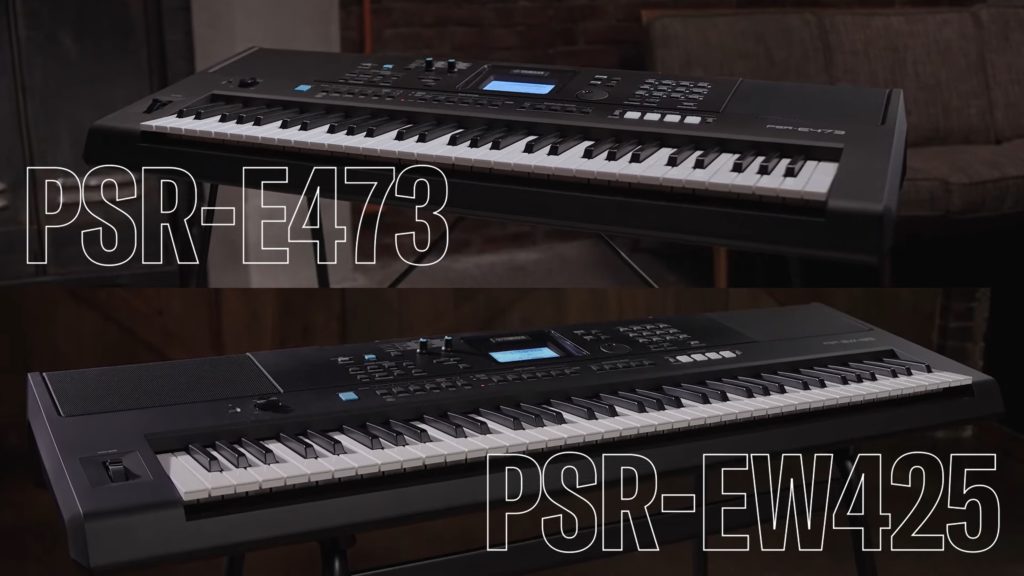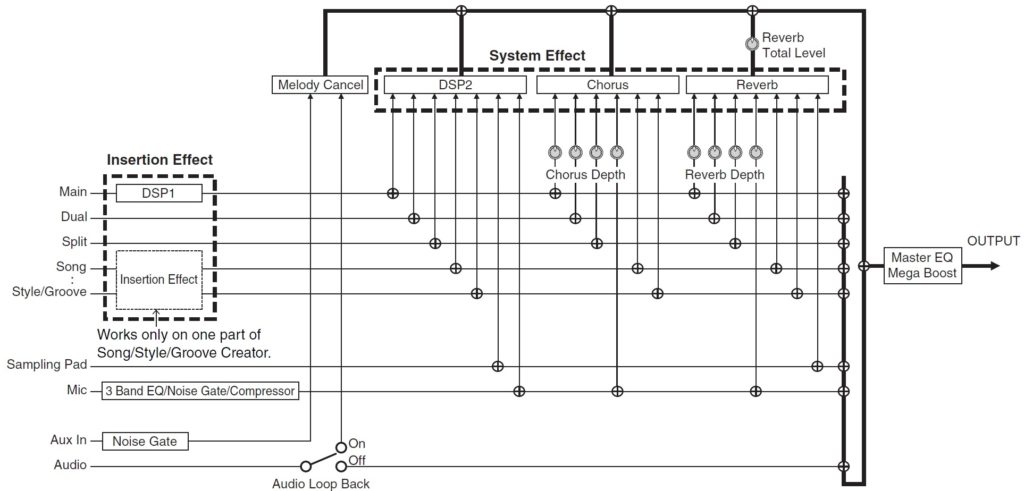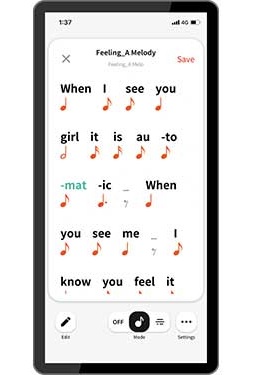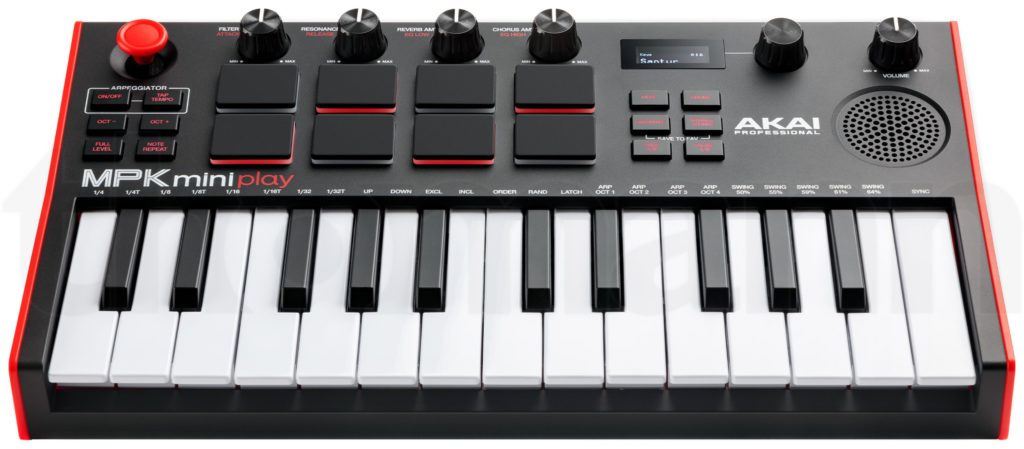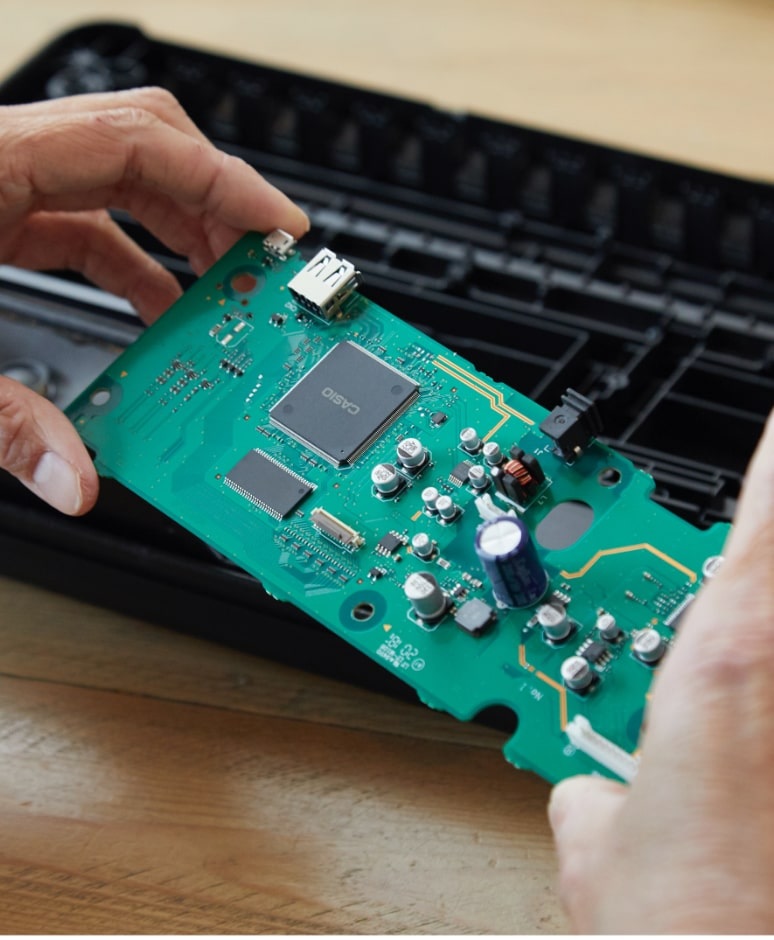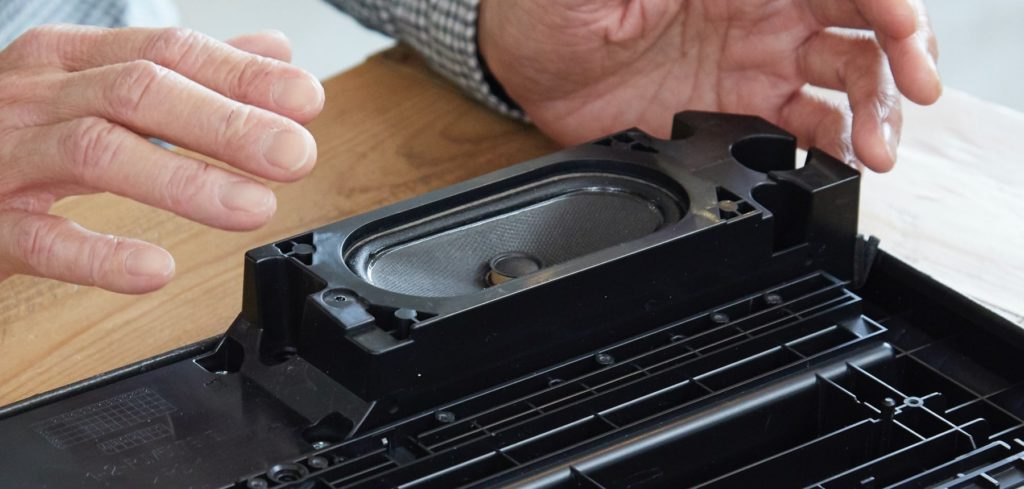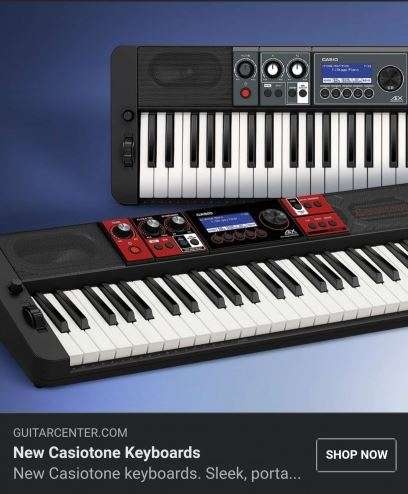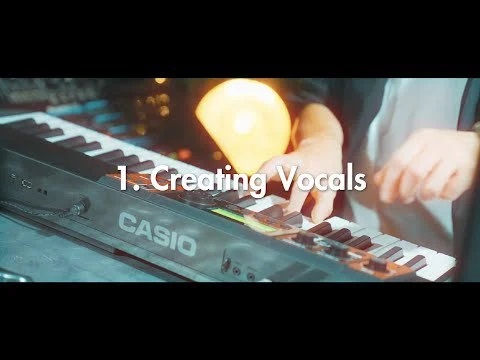Ya learn somethin’ every day. Thanks for to Mark — my neighborhood to the north in Vancouver — who looped me in.
As one might expect, Yamaha have updated their drum kit samples over the years. Who knew — the DanceKit circa 2000 is more heavy, punchy and analog than present-day DanceKit. According to Mark (and Musicnik), the Standard Kit had more punch back in the day.
The table below summaries the instruments in the Yamaha Standard Kit and Dance Kit:
Standard Kit Dance Kit
Keyboard MIDI 127/000/001 127/000/28
-------- -------- ---------------- ---------------
40 E 1 28 E 0 Brush Tap Swirl Reverse Cymbal *
41 F 1 29 F 0 Snare Roll Snare Roll
42 F# 1 30 F# 0 Castanet Hi Q 2 *
43 G 1 31 G 0 Snare Soft Snare Techno *
44 G# 1 32 G# 0 Sticks Sticks
45 A 1 33 A 0 Bass Drum Soft Kick Techno Q *
46 A# 1 34 A# 0 Open Rim Shot Rim Gate *
47 B 1 35 B 0 Bass Drum Hard Kick Techno L *
48 C 2 36 C 1 Bass Drum Kick Techno 2 *
49 C# 2 37 C# 1 Side Stick Side Stick Analog *
50 D 2 38 D 1 Snare Snare Clap *
51 D# 2 39 D# 1 Hand Clap Hand Clap
52 E 2 40 E 1 Snare Tight Snare Dry *
53 F 2 41 F 1 Floor Tom L Tom Analog 1 *
54 F# 2 42 F# 1 Hi-Hat Closed Hi-Hat Close Analog 1 *
55 G 2 43 G 1 Floor Tom H Tom Analog 2 *
56 G# 2 44 G# 1 Hi-Hat Pedal Hi-Hat Close Analog 2 *
57 A 2 45 A 1 Low Tom Tom Analog 3 *
58 A# 2 46 A# 1 Hi-Hat Open Hi-Hat Open Analog *
59 B 2 47 B 1 Mid Tom L Tom Analog 4 *
60 C 3 48 C 2 Mid Tom H Tom Analog 5 *
61 C# 3 49 C# 2 Crash Cymbal 1 Cymbal Analog *
62 D 3 50 D 2 High Tom Tom Analog 6 *
63 D# 3 51 D# 2 Ride Cymbal 1 Ride Cymbal 1
64 E 3 52 E 2 Chinese Cymbal Chinese Cymbal
65 F 3 53 F 2 Ride Cymbal Cup Ride Cymbal Cup
66 F# 3 54 F# 2 Tambourine Tambourine
67 G 3 55 G 2 Splash Cymbal Splash Cymbal
68 G# 3 56 G# 2 Cowbell Cowbell Analog *
69 A 3 57 A 2 Crash Cymbal 2 Crash Cymbal 2
70 A# 3 58 A# 2 Vibraslap Vibraslap
71 B 3 59 B 2 Ride Cymbal 2 Ride Cymbal 2
72 C 4 60 C 3 Bongo H Bongo H
73 C# 4 61 C# 3 Bongo L Bongo L
74 D 4 62 D 3 Conga H Mute Conga Analog H *
75 D# 4 63 D# 3 Conga H Open Conga Analog M *
76 E 4 64 E 3 Conga L Conga Analog L *
77 F 4 65 F 3 Timbale H Timbale H 7
8 F# 4 66 F# 3 Timbale L Timbale L
79 G 4 67 G 3 Agogo H Agogo H
80 G# 4 68 G# 3 Agogo L Agogo L
81 A 4 69 A 3 Cabasa Cabasa
82 A# 4 70 A# 3 Maracas Maracas 2 *
83 B 4 71 B 3 Samba Whistle H Samba Whistle H
84 C 5 72 C 4 Samba Whistle L Samba Whistle L
85 C# 5 73 C# 4 Guiro Short Guiro Short
86 D 5 74 D 4 Guiro Long Guiro Long
87 D# 5 75 D# 4 Claves Claves 2 *
88 E 5 76 E 4 Wood Block H Wood Block H
89 F 5 77 F 4 Wood Block L Wood Block L
90 F# 5 78 F# 4 Cuica Mute Scratch H *
91 G 5 79 G 4 Cuica Open Scratch L *
The starred (“*”) entries denote analog drum machine samples.
I decided to do a side-by-side comparison. I first recorded the DanceKit samples as dry as possible on the Yamaha PSS-A50 and the Yamaha QY-70 (circa 1997). Then I matched everything up, ignoring the toms and a few extraneous instruments.
- Three kicks (A50 followed by QY70)
- Four snares (A50 followed by QY70)
- Three hi-hats (A50 followed by QY70)
- Two cymbals (A50 followed by QY70)
- H/M/L Congas (A50 followed by QY70)
- Cowbell, maracas, claves (A50 followed by QY70)
You’ll hear all the PSS-A50 examples first followed by all of the QY70 examples. I’ll let you decide as to your personal preference. Although I tried to get the A50 dry, there seems to be a hint of reverb remaining.
Without further ado, here is a ZIP file containing the WAV for all of the Yamaha QY-70 Dance Kit instruments starting from the bottom of the keyboard to the top. Have fun! Slice and dice everything into audio mirepois.
If a drum machine plays in the forest and no one is around, does it still make a sound? 🙂
Copyright © 2022 Paul J. Drongowski

